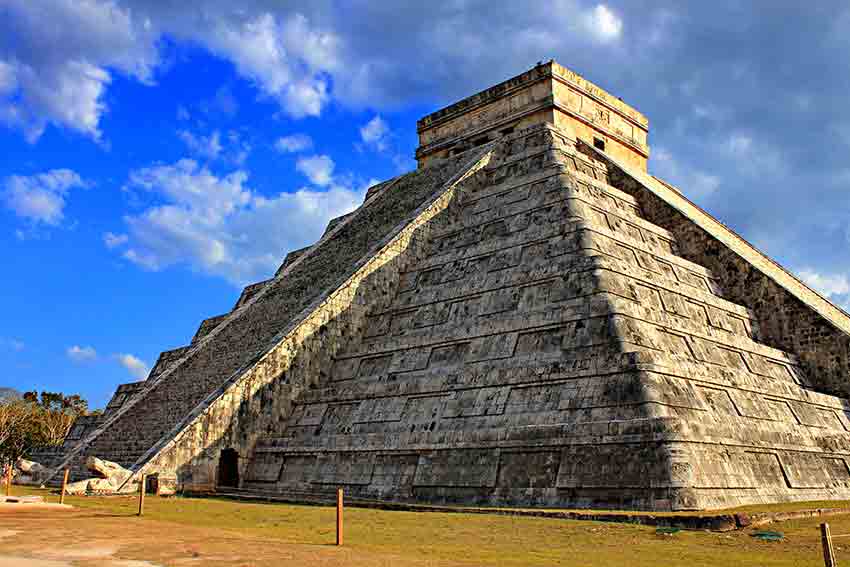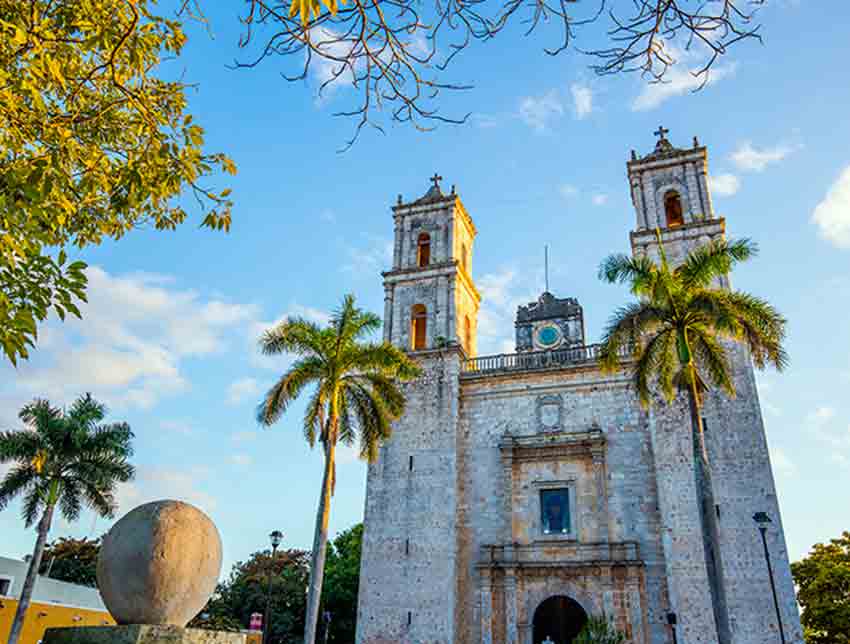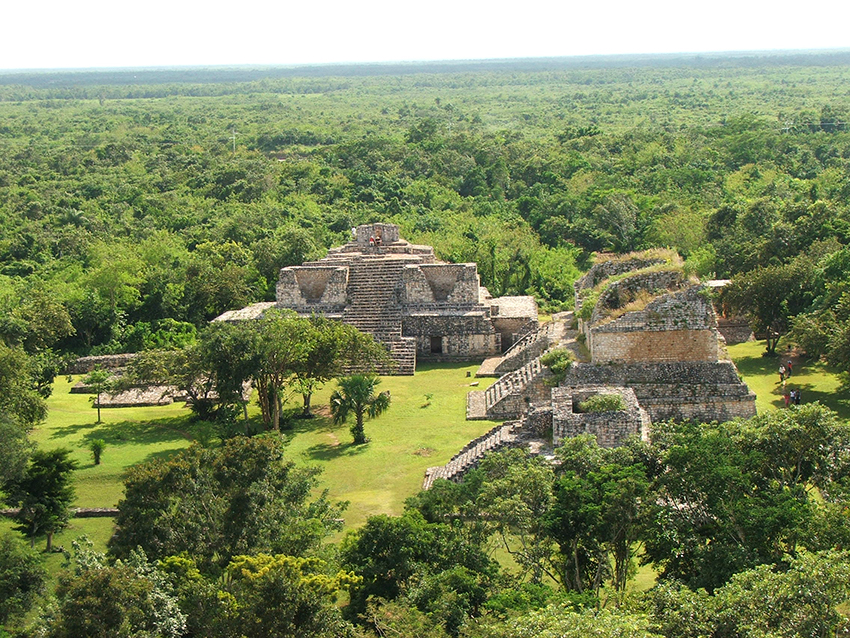As the sun sets on the day of the spring equinox in March and the shadows fall across the Pyramid of Kukulcan in the ancient Maya city of Chichen Itza, the mysterious shape of a serpent ripples across the stone. This is the symbol of Kukulcan, the feathered serpent god, returning to earth.
Ancient temple builders aligned the pyramid so precisely that it catches the rays of the setting sun on the days of the spring and fall equinoxes in March and September. Triangles of light and shadow appear along the side of the north staircase forming the shape of a snake, which merges with the head of a stone snake at the foot of the building. The illusion is created of a gigantic serpent slithering down from the heavens and across the ground towards the Sacred Cenote.
The snake symbolizes Kukulcan (also known as Quetzalcoatl in central Mexico), the feathered serpent god, who returns to earth to give hope to his followers and it also heralds the spring planting and fall harvest seasons for the Maya, thus acting as a solar calendar.
The spring equinox officially falls on March 20 in 2019. The light and shadow snake is visible the day before and after the equinox, cloud cover permitting.
Of course, there’s much more to see at Chichen Itza than the pyramid. As you explore this huge site, which is still being excavated, you’ll see why it is a UNESCO World Heritage Site.
Making a day of it in eastern Yucatan
If you would prefer to explore Chichen Itza at your own pace, why not rent a car and visit other sites of interest in the eastern Yucatan? They include colonial towns, cenotes and caves, nature reserves and archaeological sites.
Spend the morning in the colonial city of Valladolid. This peaceful pueblo magico is full of history and traditions. Start with the spectacular Zaci Cenote then stroll through the main square to the Cathedral. If you are interested in Mexican handicrafts, take the 10 a.m. guided tour of Casa de Los Venados, a 17th-century restored mansion that is a private home with a collection of more than 3,000 pieces of folk art from all over the country. For a glimpse of the colorful world of traditional Mexican garments, visit the MUREM Mexican Ethnic Clothing Museum nearby. Then walk along Calzada de Los Frailes, the street leading to San Bernardino Church and Sisal Convent. You’ll pass more restored mansions, craft shops, a workshop where cacao is transformed into chocolate using traditional techniques, and a perfumery.
To the north of Valladolid, a side trip to an artisanal distillery will show you how the blue agave plant of tequila fame is harvested and processed to make a liquor, in this case it is called Mayapan.
Mayapan is not the only spirit produced in Valladolid, the town is also famous for Xtabentun, the fragrant anise-flavored liqueur of the Yucatan, which is made from honey and a native flower.
As an alternative, you could visit two ancient Maya cities in one day, Ek Balam in the morning and Chichen Itza in the afternoon, staying on for the evening video mapping show.
Located 20 minutes to the north of Valladolid, Ek Balam (“black star jaguar in Maya”) was inhabited from 600 B.C. and reached its peak between A.D. 600 and 900.
Excavation is still underway at the site and in an area of 12 square kilometers archaeologists have already unearthed over 60 structures ranging from temples and palaces to a ball court and tiny shrines. They have discovered hieroglyphic inscriptions, a royal tomb with offerings of jade, pottery and copal incense and proof of the links Ek Balam once had with rival city states in the Yucatan such as Chichen Itza, on the coast of Quintana Roo and the Peten region in northern Guatemala.
The central plaza is dominated by the Acropolis, a multi-tiered building of palaces and temples. Its crowning glory is an intricate frieze of stucco masks and the statues of richly attired nobles in feather headdresses.
After your Ek Balam visit, a dip in the cold, clear waters of a cenote is a great way to cool off. There is a sinkhole just down the road from the archaeological site or you can drive to Hubiku Cenote outside the village of Temozon. There are more cenotes on the outskirts of Valladolid including Dzitnup or Xkeken, the Yucatan’s most famous sinkhole. En route to Chichen Itza you can also call in at Ik-Kil Cenote and Balancanche Caves.
Ready to visit Chichen Itza?
Thomas More Travel offers several day trips to Chichen Itza. Choose the one that suits you best. An alternative is to rent a car or arrange a private tour with Thomas More Travel and explore the eastern Yucatan.



